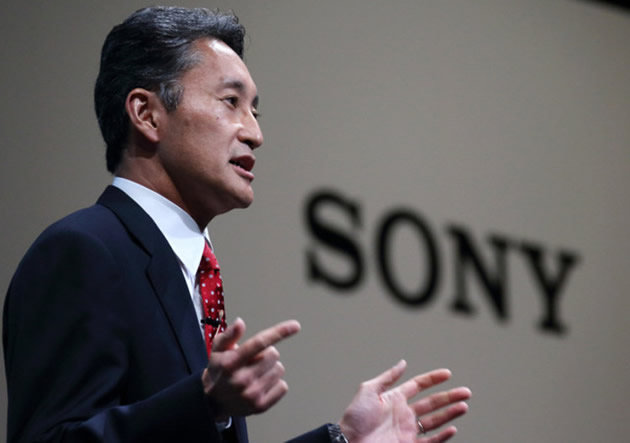Sony’s Hirai identifies more savings

Los Angeles. — Sony Corporation will cut US$250 million in costs at its entertainment units over two years, part of Chief Executive Officer Kazuo Hirai’s plan to boost profit and keep full ownership of the movie, TV and music businesses.The company is reducing the number of films from Columbia Pictures, shifting investment to television production and media networks, and identifying more savings, Sony told investors and analysts yesterday at its Culver City, California, film studio.
Hirai is under pressure to prove his One Sony plan tying entertainment to electronics can work, following a disastrous second quarter that included a US$181 million operating loss at Sony Pictures Entertainment. Six months after billionaire Daniel Loeb called for a partial sale of the entertainment assets, Hirai outlined priorities for cutting costs while investing in higher-growth areas, stressing ways entertainment can dovetail with electronics from the Tokyo-based company.
“I know that the whole of Sony is greater than the sum of its parts,” the 52-year-old Hirai said. “Sony Entertainment is a core part of Sony and is crucial to our future growth.”
Invoking Sony co-founder Akio Morita, who acquired the film studio in 1989, Hirai said the company is poised to make good on the benefits of owning software and hardware together.
Content can help sell TV sets, tablets and mobile phones, Hirai said, saying Sony’s leadership in the development of ultra high-definition video called 4K was made possible by owning a movie studio.
Play Station Content
Sony fell 1 percent to close at 1,875 yen in Tokyo last week. The stock has almost doubled this year.
Hirai offered other examples where entertainment has helped Sony’s electronics businesses: Blu-ray technology became a standard for home-video and video games; Xperia phone buyers can gain easy access to Sony’s movies, music and TV shows, and the PlayStation 4 game console will have exclusive Sony content.
Sony’s film and television business will have operating profit of US$630 million next year on sales of US$8,4 billion, David Hendler, the division’s chief financial officer, said at the conference.
To improve profit margins, the company has identified US$150 million of overhead and operational efficiencies, and US$100 million in procurement savings, Hendler said.
The division is also working with consultants to find additional cuts, Michael Lynton, CEO of the entertainment unit, said from the stage.
“No cost is too sacred to cut,” Lynton said.
Fewer Films
Sony Pictures is shifting investments to television, where profit margins are higher, Lynton said, and buying out partners in its media networks outside the US. The company is looking for cable-channel opportunities in the US, he said.
Columbia Pictures will release 18 films annually, down from 23 in past years, said Amy Pascal, co-chairman of the film studio. She announced a third “Spider-Man” film for 2016 and a fourth for 2018. The studio is also raising profit targets for new movie projects, cutting marketing costs and negotiating talent deals that provide financial rewards only in success, she said.
“If we don’t make money, they don’t make money,” Pascal said at the conference.
Sony hired Bain & Co. to identify more than US$100 million in entertainment expense reductions, a person with knowledge of the matter said this week.
Loeb’s View
Sony’s 127 TV channels reach 950 million TV subscribers in more than 150 countries, said Steve Mosko, president of the television division.
The company is buying out partners in India and other countries and will sell stakes in channels where growth is less robust, Mosko said.
“Sony Entertainment has tremendous unrecognised depth from TV production of hits like ‘Breaking Bad’ and leadership in the growth of networks in India,” said Daniel Ernst, an analyst at Hudson Square Research who attended the meeting. “But that depth only reinforces my view that those businesses would get better recognition and unlock more value if they listed a stake of the business separately.”
In May, Loeb’s Third Point LLC proposed a partial sale of the entertainment assets to improve management discipline, capture higher valuations and free the unit from Sony’s struggling electronics manufacturing — a plan Hirai rejected in August.
Loeb, who didn’t attend, has softened his criticism of Sony, despite failing to secure a partial sale of the entertainment assets. Speaking this month at an event sponsored by the New York Times, the 51-year-old investor said he was impressed with Hirai’s response to his concerns.
Segment Breakouts
“We wanted transparency, we wanted to highlight the values. We wanted to focus on profitability and accountability,” Loeb said. “They’ve basically said they’re going to do all those things.”
Sony has started disclosing more financial results for its entertainment operation. Film and TV posted US$1,82 billion in second-quarter sales.
Revenue jumped more than 20 percent in recorded music, the business of releasing albums, and music publishing, which collects royalties. In music, operating profit rose to US$99 million on sales of US$1,17 billion. For the year ending in March 2015, Sony projects music revenue of US$4,8 billion and operating profit of US$450 million, executives said yesterday. Hirai sees content growing in value, and said in an August 6 letter that shareholders will benefit from full ownership as more entertainment gets distributed to mobile devices.
No Leverage
The new PlayStation 4 console is part of Sony’s plan to deliver its own content to consumers’ living rooms.
Sony sold more than 1 million consoles in North America during the first 24 hours of sales beginning November 15, topping initial results for the PlayStation 3 in 2006.
“We are looking at several opportunities beyond the traditional game-related content,” Hirai said, declining to offer more specifics.
Tying together content with electronic equipment isn’t easy, said Peter Guber, who was chairman of Sony Pictures Entertainment from 1989 to 1995.
“There’s not a lot of leverage,” Guber said. “Just because a Sony movie is good doesn’t mean you’re going out the next day to buy a Sony TV or camcorder.” There are few examples of Sony using content to sell electronics —Bloomberg.










Comments